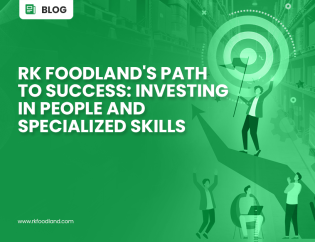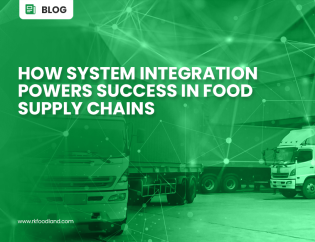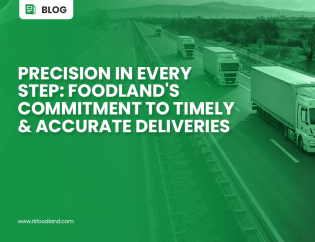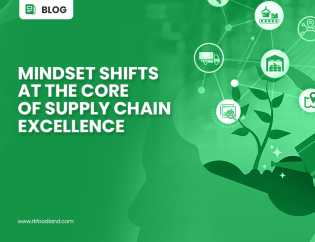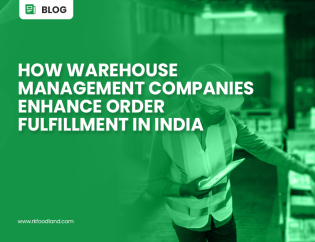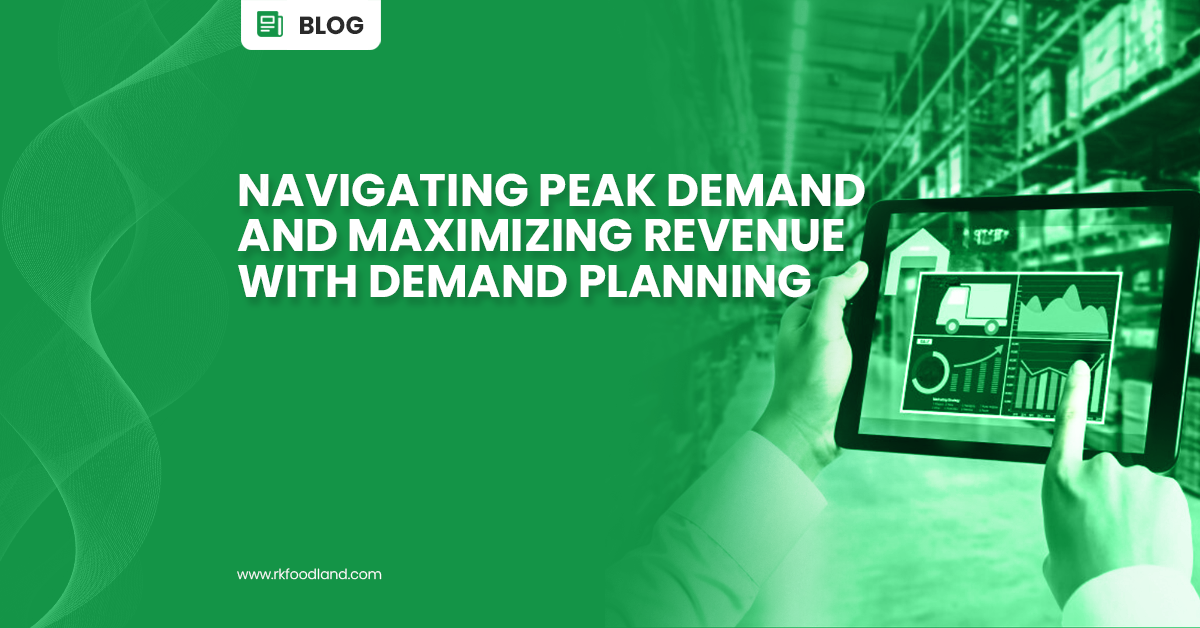
[Avg. read time < 4 mins]
In today’s fast-paced market, missing out on peak demand can mean missing out on a goldmine of revenue opportunities. Imagine having the power to predict the future, to know when your customers will come knocking, and to be fully prepared to meet their needs without breaking the bank efficiently navigating peak demand maximizing revenue by 20 to 50% . That’s the magic of Demand Planning—a systematic approach that accurately forecasts demand, facilitating informed inventory planning. Analysing demand dynamics and employing technology for data-driven insights, businesses can ensure product availability during high-demand periods whilst being cost effective. This blog delves into the balance of understanding demand dynamics, utilizing the trifecta - technology, process & people for maximizing revenue with the right demand planning approach.
Decoding the Complexity of Peak Demands in the Food Industry
Peak demands are a consistent feature in business cycles. While they occur regularly, each peak presents its own set of complexities. These aren’t just mere fluctuations; they are intricate patterns woven with new challenges that businesses must decode every time. Inventory management becomes a tightrope walk in such scenarios. On one side, there’s the looming threat of stockouts, which can lead to missed sales opportunities and disappointed customers. On the other, there’s the risk of overstocking, where perishable goods might go to waste, burning a hole in the company’s pocket. This delicate balance becomes even more important for food businesses, where inventory isn’t just about numbers, but also about maintaining product integrity. But the challenges don’t stop at inventory. Workforce management during these peak periods is equally crucial. An inadequately trained workforce can jeopardize both product quality and service standards. For food businesses, this risk is twofold: not only is the reputation at stake, but there’s also the paramount importance of adhering to food safety and compliance standards. Faced with these challenges, food businesses must make a choice. They can pursue the potential revenue boost from peak demands or prioritize cost management and compliance. The question becomes: How can food businesses seize the opportunity without compromising on quality and compliance?
Harnessing Technology for Actionable Insights and Proactive Responses
Building on the intricacies of demand dynamics, it’s evident that the traditional methods of navigating peak demands are no longer sufficient as 30% of businesses plan to implement cloud-based demand planning software in the next 2 years. While the analysis of demand dynamics can flood businesses with a wealth of data, this raw information, unless refined and processed, remains just that—information. What businesses truly need are actionable insights. Solutions like DemandXPro, powered by new-age technology, transform raw data into valuable insights, enabling planners to make proactive and informed decisions. Instead of reacting to demand surges, businesses can now anticipate them. This foresight is not just about predicting numbers; it’s about establishing a seamless communication flow, streamlining processes, and updating operational protocols across the entire supply chain. The result?
- Stakeholder alignment and a swift, coordinated response to any demand surge.
- Furthermore, with the aid of such technology, resource allocation becomes more strategic rather than a game of guesswork.
- Efficient resource distribution ensures that every process in the supply chain runs smoothly.
- Additionally, robust supplier coordination becomes pivotal.
- Guaranteeing timely inventory replenishment, especially during those critical peak demand periods.
In essence, with the right technology in place, businesses can transform challenges into opportunities, ensuring they’re always a step ahead in the game.
Transforming Supply Chain: From Operational Necessity to Strategic Powerhouse
Understanding demand dynamics and leveraging technology is the realization of proactive planning’s true potential. At its core, proactive demand forecasting is not just about predicting numbers; it’s about optimizing every facet of the supply chain to ensure product availability and, consequently, revenue maximization.
Enhancing ‘Material Requirement Planning’ allows businesses to:
- Ensure every component and raw material is available when needed.
- Eliminate unnecessary holding costs.
- Reduce the risk of stockouts.
Refined Inventory Planning ensures:
- Finished products are always ready to meet demand.
- Avoidance of overstocking or understocking pitfalls.
Improved Procure to Pay Cycle Management:
- Ensures timely payments.
- Fosters strong supplier relationships.
- Guarantees a steady flow of essential materials.
The ripple effect of these optimizations is profound:
- Increased supply chain visibility.
- Businesses gain a bird’s-eye view of operations.
- Allows for improved production scheduling.
- Pinpoint accuracy in order fulfilment.
The result? Not just successful management of peak demands, but a maximization of revenue during these critical periods. But the benefits don’t stop at revenue. Forecasting can reduce estimation errors by 15% and increase plant output by 10% while reducing inventory levels by 20%. Also, efficient resource utilization means every asset, every employee, every penny is used to its fullest potential. Reduced wastage, both in terms of materials and time, further drives profitability. In essence, proactive planning transforms the supply chain from a mere operational necessity into a strategic powerhouse, propelling businesses towards unparalleled growth and success.
Navigating peak demand in the food industry is a complex dance of insights, technology, and strategy. From the intricacies of demand dynamics to the precision of modern tools and the tangible outcomes of proactive demand planning, the path to revenue maximization is clear. With tools like DemandXPro, businesses are equipped to transform challenges into lucrative opportunities. The future of demand management is proactive, and data driven.
Want to efficiently manage your peak demand? Reach out to our experts for a ‘DemandXPro’ demo and steer your business towards unmatched growth.
Related Content | Foodland’s Resources
Planning & Fulfillment – Supply chain optimization for an interconnected global network
Predictive sales forecasting: Is your finance function up to code?


